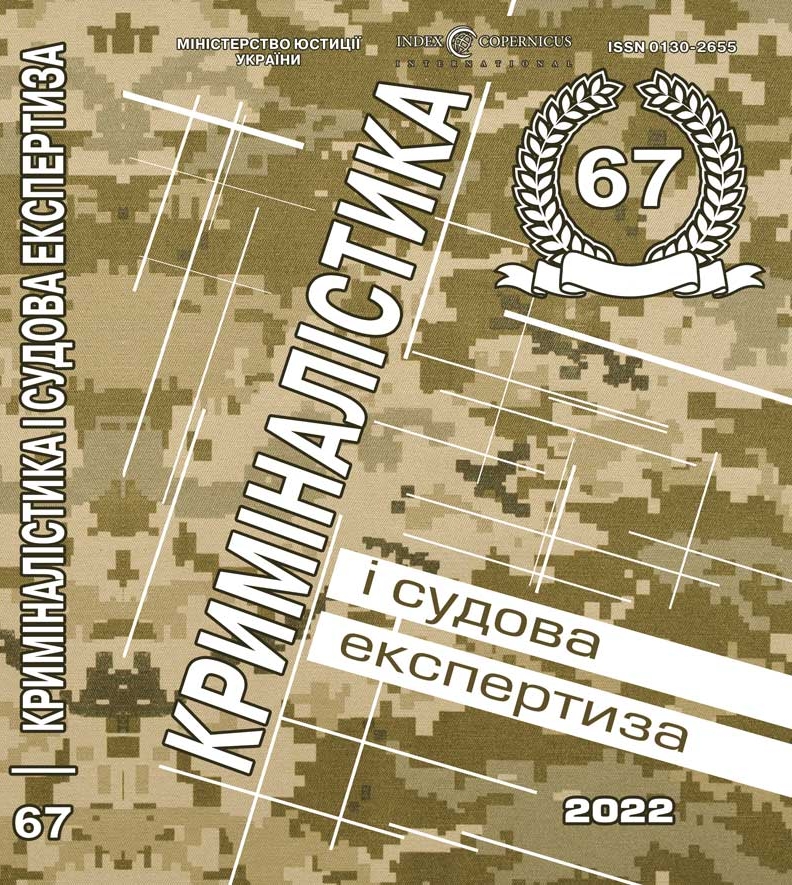
DOI: https://doi.org/10.33994/kndise.2022.67.02
O. Ruvin, A. Poltavskyi
The article shows the issues, which is the inadequate regulation of the functioning of methods of conducting forensic examinations.
Thus, at the time of creation in 2008 of the Register of methods of forensic examinations, the methodology was defined as the result of scientific work, which contains a system of research methods used in the course of successive actions of the expert to perform a specific expert task. Therefore, the Register included methods (sections, subsections) of manuals, methodological recommendations, final reports on research work, etc. as methods. These works were not methods. At that time, the concept of methodology as an official publication was not defined.
In the years 2010-2012 and the year 2020, research was conducted, during which the concepts of expert methodology, expert methodology as an official publication, their content and structure were defined. In 2013, the primary regulatory framework governing the operation of the Register was improved. At the same time, there was no audit of the methods for their compliance with the established content and structure, which is a consequence of the lack of normative established procedure for testing and revision of methods.
The authors propose to take as a basis the established procedure for verification and revision of normative documents, that is, state standards and codes of established practice, regulated by the state standard of Ukraine.
In accordance with the established procedure for standardization, regulatory documents are checked at least once every 5 years, unless there is a need to check them earlier. Based on the results of the inspection, a decision may be made on:
– the use of the normative document without revision:
– the use of the regulatory document with restriction of scope;
– the cancellation of the normative document;
– the revision of the regulatory document;
– the development of the project of changes to the regulatory document.
Subsequently, the National Standardization Body based on the results of the
inspection:
– issues an order to cancel the regulatory document;
– issues an order in which it determines the conditions of application and the scope to which the requirements of the regulatory document do not apply;
– considers a proposal to revise the regulatory document or develop changes to
the National Standardization Work Program.
The revision of the normative document can be made if it is necessary to make
changes in more than 50% of its volume.
It is suggested to regulate the procedure of functioning, including verification and
revision of methods, DSTU “Forensic expert activity. Rules for the development,
presentation, and design of methods of forensic examinations”.
Key words: normative regulation, inspection, revision, forensic examinations, functioning of expert methods.










